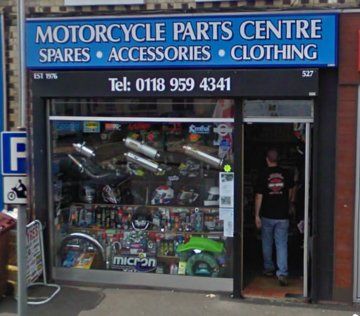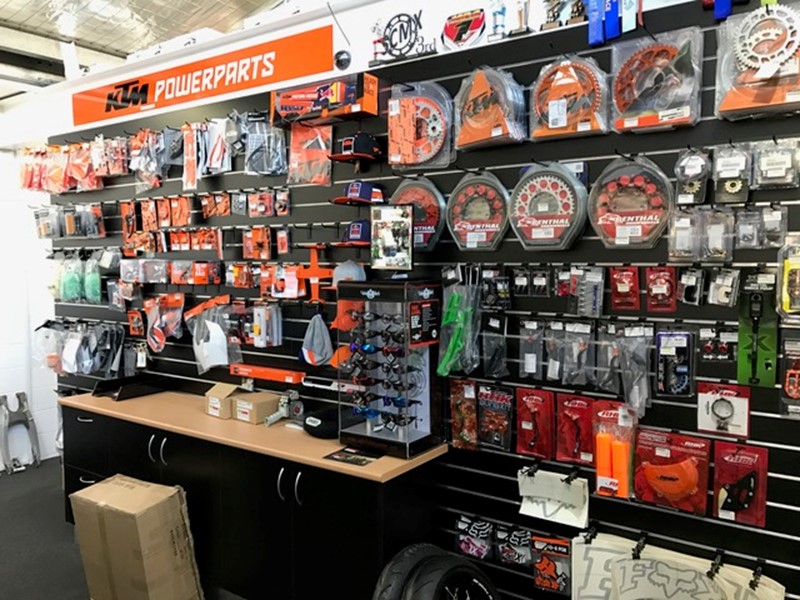Necessary Motorcycle Parts NZ for Peak Performance and Security
Necessary Motorcycle Parts NZ for Peak Performance and Security
Blog Article
Recognizing the Necessary Parts of a Motorbike: A Comprehensive Overview for Lovers
For motorcycle enthusiasts looking to raise their riding experience and ensure their bikes run smoothly, recognizing the essential components of a motorcycle is critical. Each component, from the engine's detailed operations to the crucial function of the stopping devices, not just impacts performance yet additionally safety and security and convenience.
Engine Parts

The camshaft plays a critical function in controlling the timing of the engine's shutoffs, making sure the exact opening and closing required for reliable gas and air intake, along with exhaust expulsion. This timing is essential to preserving optimal engine performance and performance. Additionally, the carburetor or gas shot system, depending upon the bike design, is accountable for blending air with gas in the appropriate proportion for combustion.
The air conditioning system, either air or liquid-based, functions to preserve the engine's temperature level within functional restrictions, stopping getting too hot and guaranteeing long life - motocross parts nz. Each component, thoroughly designed and incorporated, adds to the smooth operation of the engine, specifying the motorcycle's power result and total efficiency
Transmission System
Important to the bike's functionality, the transmission system guarantees effective power transfer from the engine to the wheels. This system makes up several important components, consisting of the clutch, transmission, and last drive, each playing a vital duty in translating the engine's power into motion. The clutch, normally operated by a hand lever, serves to engage and disengage the engine from the transmission, enabling smooth gear adjustments and regulated velocity.
The transmission, typically described as the transmission correct, has a collection of equipments that motorcyclists can manually shift through to adjust the bike's speed and torque output. These gears are organized in a sequence that enables the bike to increase efficiently and maintain optimum engine efficiency across numerous rates. A lot of motorbikes use a consecutive gearbox, calling for the cyclist to change equipments in a fixed order.
Braking Devices
While recognizing the transmission system is key to utilizing a bike's power, just as important is the ability to regulate and quit that power successfully, which is where braking systems enter into play. Brakes are important for security and performance, giving the cyclist with the needed control to navigate numerous terrains and problems. Commonly, motorbikes feature 2 sorts of braking systems: disc brakes and drum brakes.
Disc brakes are extra prevalent in modern-day motorcycles due to their remarkable efficiency. This system supplies better warmth dissipation, consistent efficiency, and enhanced quiting power, specifically in wet conditions.
Conversely, drum brakes, though much less usual, are still found in some motorbikes. They work by pressing brake shoes versus the inner surface area of a drum connected to the wheel. While usually less effective in warm dissipation and stopping power, drum brakes are less complex and a lot more economical.
Understanding these stopping systems' subtleties allows cyclists to maintain their motorcycles appropriately and value the engineering that makes certain safe check my site and effective quiting.
Suspension and Guiding
Suspension and guiding systems are vital elements that dramatically affect a motorcycle's handling and ride comfort. The shock absorber, including forks at the front and shock absorbers at the rear, absorbs roadway abnormalities, improving stability and control. Front forks, commonly telescopic or inverted, compress and rebound to reduce impacts, while rear shock absorbers preserve tire contact with the road, essential for traction and safety.
Steering, focused around the handlebars, links the biker to the motorbike's directional control. The steering head bearings make certain smooth procedure, enabling exact maneuverability. Proper alignment and upkeep of these bearings are critical for foreseeable steering reaction and reducing motorcyclist fatigue.
The suspension's adjustability is one more critical facet; preload, damping, and rebound settings allow customization to match different riding conditions and designs. This adaptability is crucial for optimizing performance, whether browsing urban roads or dealing with tough routes. Advancements like electronic suspension systems offer real-time changes, improving ride quality across diverse terrains.

Electrical Equipments
After making sure a regulated and smooth experience through efficient suspension and guiding systems, interest transforms to the electrical systems, a crucial element of contemporary bikes. These systems play a vital role not just in starting the engine yet additionally in powering various elements that boost the functionality and safety and security of the motorcycle.
At the heart of a motorbike's electric system is the battery, which stores electrical power necessary for beginning the engine and powering complementary systems - mx gear nz. The alternator or generator, coupled with the rectifier-regulator, makes sure the battery remains billed while the motorbike functions, converting power right into electrical energy and keeping voltage degrees
The ignition system, an additional critical element, is accountable for sparking the air-fuel combination in the engine's cyndrical tubes. Modern bikes often utilize an electronic ignition system, supplying better effectiveness and dependability compared to typical systems.
Lights systems, including fronts lights, tail lights, and indications, are additionally vital, making sure visibility and safety for the rider. Additional digital components such as sensing units, control systems, and shows add to innovative functions like fuel injection administration, anti-lock braking systems (ABDOMINAL), and electronic control panels, additionally improving the riding experience.
Conclusion
A complete comprehension of a motorcycle's necessary elements, including the engine, transmission system, stopping like it mechanisms, suspension, guiding, and electric systems, is important for enthusiasts intending to enhance efficiency, safety, and comfort. Proficiency of these elements permits notified decisions regarding maintenance and upgrades, eventually enhancing the riding experience. By integrating this expertise, bikers can ensure their motorcycles run at peak effectiveness and dependability, therefore making best use of both enjoyment and durability of their automobiles.
For bike enthusiasts looking to raise their riding experience and ensure their bikes run efficiently, recognizing the crucial parts of a motorbike is extremely important.Integral to the motorbike's capability, the transmission system makes sure reliable power transfer from the engine to the wheels.While understanding the transmission system is vital to taking advantage of a motorbike's power, similarly vital is the capability to regulate and quit that power properly, which is where stopping devices come right into play. Usually, motorcycles include 2 types of braking systems: disc brakes and drum brakes.
A comprehensive comprehension of a motorbike's necessary components, including the engine, transmission over here system, stopping systems, suspension, guiding, and electrical systems, is important for fanatics aiming to optimize comfort, performance, and security.
Report this page